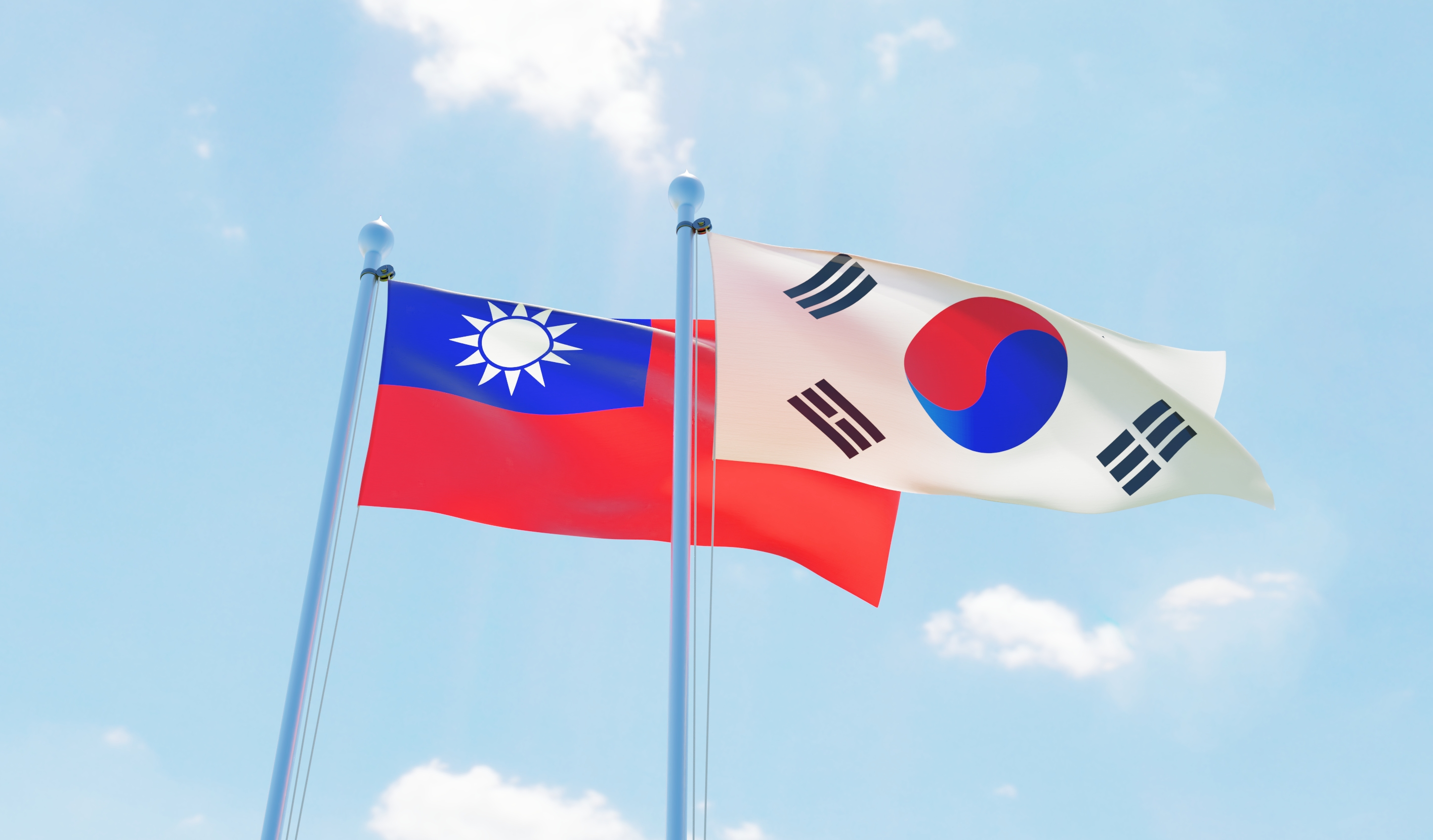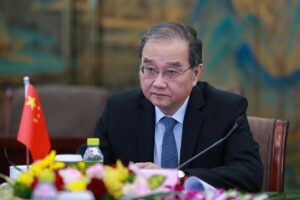Since the inauguration of the Biden administration, Washington’s efforts to strengthen alliances and partnerships in East Asia have put Beijing at great unease. After years of turbulent U.S.-China interactions over cross-Strait relations, American efforts to increase the involvement of countries in the region in the Taiwan issue have China on high alert as it perceives these actions as hostile. Taiwan was included in both of President Biden’s joint statements following leadership summits with Japanese Prime Minister Suga in April 2021 and with South Korean President Moon Jae-in in May 2021, raising the question as to what role, if any, the U.S.’s two Northeast Asian allies will play in a potential future Taiwan contingency.
South Korea’s potential role in a Taiwan contingency is of particularly high importance for Chinese policy planning as it could complicate what, from Beijing’s perspective, is already an uphill battle. Politically speaking, this would not only reflect the attitude of the international community toward a Chinese military campaign, but it would also challenge the fundamental legitimacy of the operation if Seoul were to side with the U.S. and Taiwan. We can expect that China will exhaust almost all efforts to prevent South Korea from getting involved. Therefore, it is important to assess how China will pursue a prevention strategy. China’s efforts to change South Korea’s decision to deploy the Terminal High Altitude Area Defense (THAAD) system in 2016 serve as a reminder that such a strategy could be difficult and costly for both Beijing and Seoul.
China-Related Cooperation of the US-ROK Alliance
Despite the overall positive trajectory of China-South Korea relations under the Moon administration, Beijing has been highly alarmed by the potential “China-related cooperation of the US-ROK alliance” as the Biden administration works to repair its alliance relationship with Seoul. From Beijing’s perspective, cooperation between Washington and Seoul on Chinese-related issues covers key areas of the Sino-US strategic competition, including Taiwan, Asia-Pacific, economics and trade, science and technology, as well as the broader international order. Seoul’s potential participation in the Quad system (through Quad+) has been in discussion for some time, and the recent lifting of missile guidelines has further deepened China’s suspicion that the U.S. intends to unleash South Korea to deploy intermediate-range missiles, the range of which far exceeds what is needed to target North Korea.
On nontraditional security issues, South Korea plays a critical role in the global supply chain of the high-tech industry. The recent semiconductor dialogue and cooperation between the U.S. and South Korea touches a Chinese nerve due to its own vulnerable position in the supply chain. From climate change to high tech and vaccine cooperation to a values-based alliance, South Korea’s identified areas of cooperation with the United States draw a clear picture of a South Korean preference to cooperate with the U.S. over China and participate in the U.S. Indo-Pacific strategy. The fact that China has been trying to drive a wedge between the U.S. and South Korea and exploit the opportunities created by the Trump administration—such as the exorbitant increase in military burden-sharing and overall antagonistic approach to allies—to consolidate Sino-ROK cooperation; shifts in South Korea’s alignment, even if only nuanced, have a significant impact on China’s regional strategy.
Taiwan as the Focal Point
In this context, the issue of Taiwan carries particular importance and sensitivity in China’s assessment of South Korea’s future position in the U.S.-China strategic competition. For China, the reference to Taiwan in the Biden-Moon joint statement is the first time the US-ROK alliance “infringed upon China’s internal affairs… [and] therefore is a particularly important indicator of the alliance’s future planning.” While the joint statement did not include anything inconsistent for either country, Biden and Moon emphasized “the importance of preserving peace and stability in the Taiwan Strait.”
As mainland China ramps up its strategy of intimidation and coercion against Taiwan, the reference in the joint statement came across as a direct message to Beijing about the implications of its strategy on regional peace and security. It also raised the question as to what actions the U.S. and South Korea could jointly take in the event of a Taiwan contingency, especially one that is initiated by mainland China. After the leadership summit, the South Korean vice foreign minister emphasized on May 23, 2021 that stability and peace in the Taiwan Strait have a direct impact on South Korea’s national interests. This was followed by a discussion among Japanese and South Korean vice foreign ministers and U.S. Deputy Secretary of State Wendy Sherman in Tokyo on July 20, 2021 on preserving peace in the Strait.
China’s biggest concern is that the U.S. and South Korea could develop and regularize their security cooperation in relation to the Taiwan Strait, following the model of U.S.-Japan cooperation. After many years of South Korea’s detached and relatively noncommittal position on the utility of the US-ROK alliance toward Taiwan, Beijing worries that South Korea’s commitment—even to something as vague as the peace and stability of the Taiwan Strait—could evolve from rhetoric to concrete actions. In particular, the Chinese are suspicious that South Korea will not be able to stop the U.S. from mobilizing or deploying U.S. troops in South Korea to participate in a Taiwan contingency. In documents, such as the Joint Communique of the 52nd U.S.-Republic of Korea Security Consultative Meeting of 2020, the application of the alliance has expanded beyond the Korean Peninsula to “the region.” These changes ring alarm bells for Beijing.
As China prepares for military options in a potential Taiwan contingency, the role and involvement of U.S. allies, especially South Korea and Japan, are particularly worrisome for Beijing. At the minimum, if the U.S. is allowed to use its military bases in the two countries and to deploy troops that are currently based there, the first and foremost question for China is whether it should treat them as targets and take military actions. Doing so would inevitably equate a declaration of war against South Korea and Japan, and thus, the United States as well.
Different Chinese Reactions to Japan and South Korea
Although the Taiwan Strait was mentioned in U.S.-Japan and US-ROK joint statements, the official Chinese reaction to each significantly differed. For example, the Chinese Foreign Ministry was surprisingly harsh and critical of the U.S.-Japan joint statement from March 16, 2021 calling the U.S. and Japan “villainous colluders ignoring the truth.” (狼狈为奸,罔顾真相.) Beijing’s condemnation of Japan is rather unprecedented. It claimed that Japan was “serving as a U.S. strategic vassal, abandoning its promises, damaging Sino-Japanese relations, showing wolves into the house, and selling out the region’s interest,” which it claimed was “shameless and unpopular.” The harshness is almost as bitter and severe as China’s position during the nadir of bilateral relations in 2012 after the Japanese government nationalized the Senkaku/Diaoyu Islands.
In comparison, China’s reaction to the same reference in the US-ROK joint statement was so mild that it hardly constituted a slap on the wrist. When inquired about China’s position, its Foreign Ministry merely encouraged “related countries to be careful about their words and actions and to not play with fire.” Not only was South Korea not named, but it also did not result in any serious criticisms or accusations.
The root of the difference lies in the Chinese perception of Japan having closer historical and emotional ties with Taiwan, as well as Japan’s deeper military involvement in the U.S. planning for a Taiwan contingency. Due to the inclusion of Taiwan in the U.S.-Japan defense guideline, Beijing remains convinced that Japanese involvement in the Taiwan Strait is almost guaranteed. In comparison, most South Korean involvement in a Taiwan contingency is theoretical. It is limited to a commitment to peace and stability, rather than to the defense of Taiwan, and is so far, just verbal. These perceptions of differing levels of commitment, potential roles, and involvement are why it issued such vastly different responses to the two countries.
China’s Coercive Methods
China’s response to Japan’s potential commitment and role in a Taiwan contingency also serves as a strong indicator that if South Korea is embarking on the same path, the Chinese will leave no stone unturned to influence, coerce and punish unfavorable South Korean decisions. Currently, two potential policy instruments are seen as being Beijing’s likely and most effective options.
The first is economic sanctions. Although non-Chinese observers don’t see economic sanctions as an effective tool, as they failed to reverse South Korea’s decision to deploy the THAAD system in 2016, China saw it as being mostly effective as it pushed South Korea to commit to the “Three Noes”: 1) no additional deployment of the THAAD system, 2) no participation in a U.S.-led regional missile defense system, and 3) no morphing of a trilateral security alliance with the U.S. and Japan into a military alliance.). Moreover, its economic impact and damage were also so severe that it could serve—and has, for the most part—to preempt similar future actions that offend China. Taiwan is evidently much more crucial for China, and China’s response to South Korea having a concrete role in a Taiwan contingency will likely include a strong economic sanctions component.
The second channel for coercion will likely be on the North Korean front. While China may not be in a position to prompt North Korea to launch a new round of provocations just to punish or distract South Korea, closer Sino-DPRK ties, including political and economic support, will be inevitable and indispensable if China deems that the US-ROK alliance has been strengthened to counter its activities during a Taiwan contingency. It opens up many possibilities and will complicate Seoul’s agenda on national unification and U.S. efforts to revive a denuclearization process.
Conclusion
Although the discussion is nascent, the role of South Korea in a Taiwan contingency is both important and impactful. It will have a critical impact on Chinese war planning, as well as the U.S.’s regional strategy. Needless to say, it will put South Korea in an extremely difficult position, as both the US-ROK alliance and South Korea’s ties with China are vital for Seoul’s national security and unification agenda. However, as U.S.-China strategic competition deepens, this is unlikely to be an issue that Seoul can permanently avoid. Understanding and preparing for China’s strategic reactions will be highly important for the planning of all parties.




